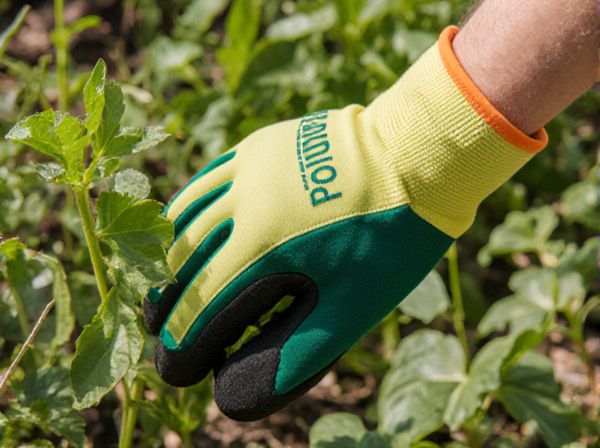
Growing season extension vs Season limitation Illustration
Growing season extension enhances agricultural productivity by allowing crops more time to mature and produce higher yields, often achieved through techniques like plastic mulching or greenhouse use. Season limitation, caused by factors such as frost risk or water scarcity, restricts the length of time when crops can be cultivated, directly impacting planting schedules and crop selection. Optimizing the balance between extending the growing season and managing natural season limitations is crucial for sustainable farming and maximizing harvest potential.
Table of Comparison
| Aspect | Growing Season Extension | Season Limitation |
|---|---|---|
| Definition | Increasing the length of the growing period for crops. | Reducing the duration of the growing period or restricting planting times. |
| Purpose | Maximize crop yield and productivity. | Control environmental impact and manage resource use. |
| Methods | Use of greenhouses, early planting, frost protection. | Use of crop rotation, fallow periods, and planting restrictions. |
| Benefits | Higher yields, increased food supply, economic gain. | Soil conservation, pest control, sustainability. |
| Challenges | Requires energy, potential pest pressures, cost of technology. | Reduced crop output, economic limitations for farmers. |
Understanding Growing Season Extension
Growing season extension enhances crop productivity by increasing the days plants can grow beyond natural climatic limits. Techniques like greenhouse use, row covers, and mulching modify environmental conditions to protect crops from frost and temperature fluctuations. Understanding these methods allows farmers to maximize yield and adapt to changing climate patterns effectively.
Defining Season Limitation in Gardening
Season limitation in gardening refers to environmental factors such as temperature, daylight, and frost that restrict the period when plants can grow and produce effectively. These limitations impact plant selection, planting schedules, and harvest times, often confining gardening activities to a narrow timeframe. Understanding specific climatic and soil constraints allows gardeners to optimize growth within these natural boundaries before considering season extension techniques.
Key Techniques for Extending the Growing Season
Extending the growing season involves techniques such as using row covers, greenhouses, and cold frames to protect crops from frost and cold temperatures. These methods create microclimates that promote plant growth beyond typical seasonal limits, increasing yield and harvest duration. Season limitation occurs when adverse weather conditions or soil temperatures constrain planting and harvesting periods, reducing overall productivity.
Factors That Limit the Gardening Season
Low temperatures and frost are primary factors that limit the gardening season by damaging or killing sensitive plants. Limited sunlight duration and reduced soil warmth during late autumn and early spring also restrict plant growth and soil microbial activity. Pest infestations and soil nutrient depletion further constrain the effective growing season by impacting plant health and yield.
Benefits of Season Extension for Gardeners
Extending the growing season allows gardeners to maximize plant productivity by increasing the number of harvests per year and reducing the risk of crop failure from unexpected frosts. Season extension techniques, such as using cold frames, row covers, and greenhouses, create a controlled environment that supports healthier growth and earlier planting dates. This prolongation enhances food security, boosts biodiversity in the garden, and optimizes resource use, benefiting both hobbyist and commercial growers.
Challenges Posed by Season Limitation
Season limitation restricts the growing period due to temperature extremes, reduced daylight, and frost risk, significantly impacting crop yields and diversity. These environmental constraints challenge farmers to select resilient crop varieties and optimize planting schedules within a narrow timeframe. Limited growing seasons also hinder the potential for multiple harvests, reducing agricultural productivity and economic returns.
Tools and Technologies for Season Extension
Tools and technologies for growing season extension include high tunnels, row covers, and soil warming cables, which create microclimates that protect crops from frost and temperature fluctuations. Precision climate control systems, such as automated irrigation and heating, optimize plant growth during colder months by maintaining ideal environmental conditions. These innovations enable farmers to extend productive periods, increase yield, and improve crop quality beyond traditional season limitations.
Impact of Climate on Growing Seasons
Rising global temperatures have led to growing season extension in many regions, enabling longer periods for crop development and increased agricultural yields. However, inconsistent climate patterns such as late frosts, droughts, and heatwaves also contribute to season limitation by disrupting plant growth and reducing productivity. Understanding the interplay between climate change and growing season dynamics is crucial for optimizing crop management and ensuring food security.
Cost-Effectiveness of Extension Methods
Growing season extension methods such as high tunnels, row covers, and greenhouses increase crop yield by allowing earlier planting and later harvesting, resulting in higher profitability per acre. While these techniques require an initial investment, their long-term cost-effectiveness is proven through reduced crop losses and extended market availability. In contrast, strategies focused on season limitation primarily reduce operational expenses but often at the cost of lower total output and diminished revenue potential.
Tips for Overcoming Common Season Limitations
Extending the growing season requires strategies such as using row covers, cold frames, and high tunnels to protect plants from frost and temperature fluctuations. Selecting cold-hardy crop varieties and adjusting planting schedules can optimize growth despite shorter natural seasons. Proper soil preparation and water management mitigate risks posed by season limitations, enhancing overall crop yield and quality.
Growing season extension vs Season limitation Infographic

 gardendif.com
gardendif.com